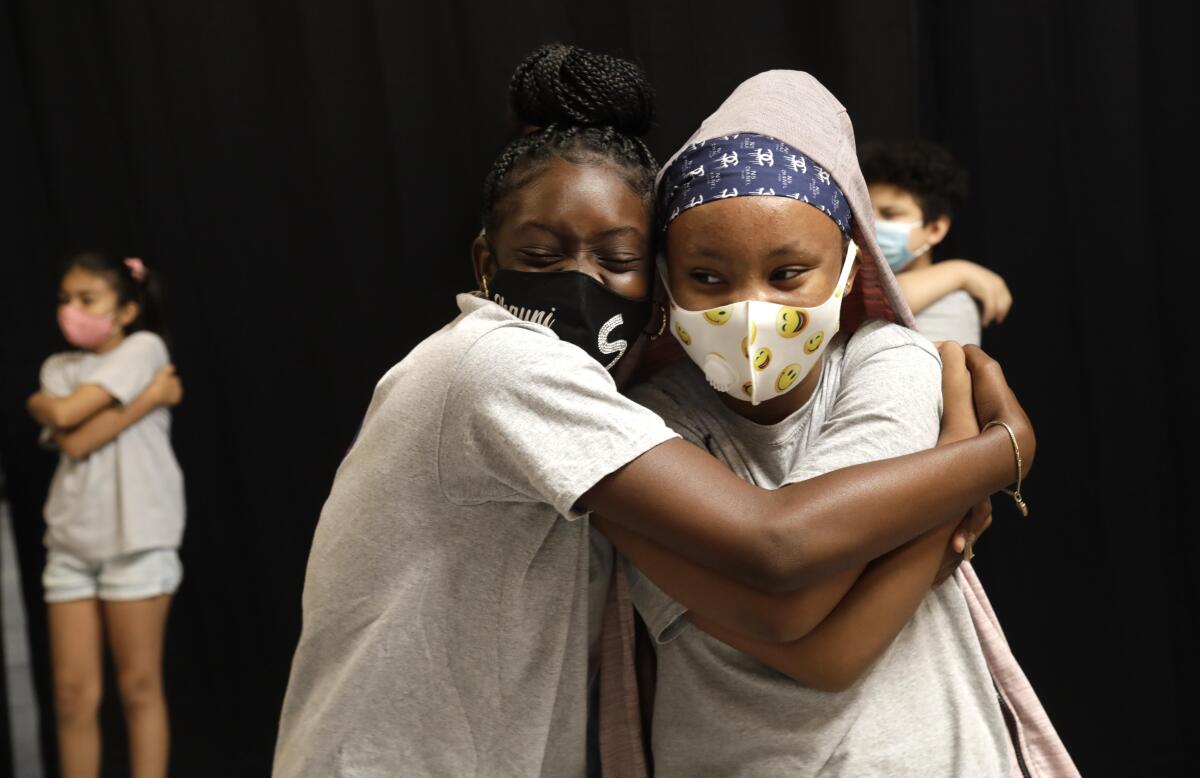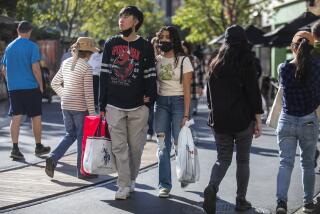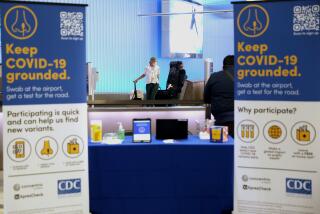L.A. County sees big drops in coronavirus cases, hospitalizations

Los Angeles County continues to see improvement in weekly COVID-19 cases and hospitalizations.
About a month ago, the county was averaging more than 3,400 new coronavirus infections a day over a one-week period. But as of Tuesday, according to a Times analysis of state data, L.A. County was averaging fewer than 1,800 cases a day, a 48% decline.
Nonetheless, coronavirus transmission levels remain high, and unvaccinated people are still at high risk of getting infected with the highly contagious virus.
Unvaccinated people are also at far greater risk of being hospitalized. Of the hundreds of people admitted to L.A. County’s public hospital system since June 15 for a diagnosis primarily due to COVID-19, 93% have been unvaccinated.
Most of the vaccinated people who have been hospitalized have compromised immune systems, and thus “are not able to mount a sufficient immune response after vaccination,” county Health Services Director Dr. Christina Ghaly said.
The U.S. Centers for Disease Control and Prevention on Wednesday night reclassified California as being in the worst tier for its categories of coronavirus transmission levels, after two days in the second-worst tier.
Still, according to the CDC, California as of Wednesday night had the nation’s lowest coronavirus case rate over the last week of 113 new cases for every 100,000 residents. Tennessee had the highest rate, with 734 cases for every 100,000 residents over the same span.
L.A. County is also still in the worst tier, with a case rate of 135 weekly coronavirus cases for every 100,000 residents. Rates of 100 or higher indicate a high level of community transmission.
While L.A. County is seeing progress, some experts caution that the pandemic can easily worsen, since officials believe the county is still short of achieving herd immunity, the condition when high rates of immunity effectively interrupt transmission.
In late July, Britain celebrated what seemed to be a recovery from its surge in illness caused by the Delta variant of the virus, but then later saw cases rise again.
California is observing far higher rates of transmission in the Central Valley and rural Northern California than along the urban coastal counties.
For every 100,000 residents, in rural Northern California, 429 people are testing positive for the coronavirus weekly; in the San Joaquin Valley, it’s 311; in the greater Sacramento region, it’s 222; in Southern California, it’s 147; and in the San Francisco Bay Area, it’s 108. Hospitals remain under intense pressure in the Central Valley and rural Northern California, which have the worst rates of COVID-19 hospitalization in California.
The Times analysis found that for every 100,000 residents, the San Joaquin Valley is reporting 37 COVID-19 hospitalizations per 100,000 residents; rural Northern California, 31; the Greater Sacramento region, 26; Southern California 14; and the Bay Area, 10.
Available intensive care unit capacity is particularly short in the San Joaquin Valley, where it has been under 10% for 15 consecutive days.
Officials have been forced to transport critically ill patients more than 100 miles away, sometimes by air, because ICUs at some hospitals are effectively full. And even hospitals in Southern California remain strained, affected by a national shortage of nurses.
Health officials are urging people still not vaccinated to get vaccinated — both for COVID-19 and the flu — to avoid another surge in respiratory diseases in the fall and winter.
More to Read
Sign up for Essential California
The most important California stories and recommendations in your inbox every morning.
You may occasionally receive promotional content from the Los Angeles Times.











